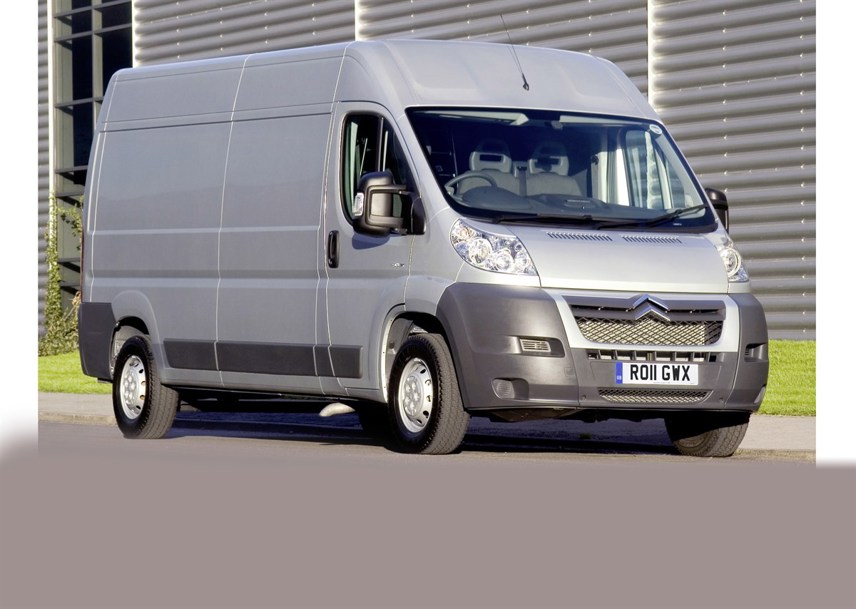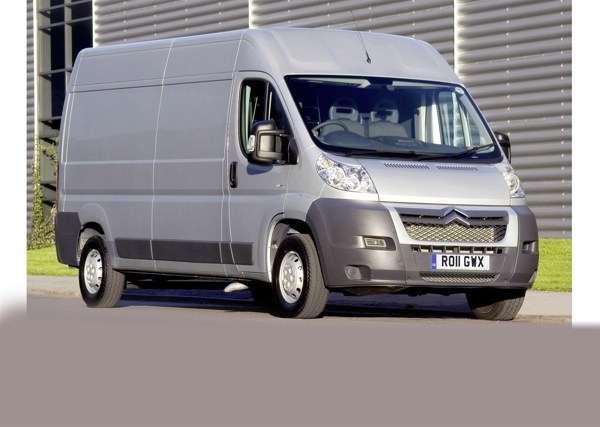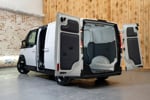Review
At the back end of last year, there was a flurry of activity in the van manufacturing fraternity as a host of refreshed models were introduced.
There was a good reason for this – the EU decreed that by October 2011 all vans had to have Euro5 compliant engines, which means fewer emissions and better fuel economy.
While all this redevelopment was going on under the bonnet, most vanmakers decided to make a few other updates as well.
Citroën was among those subtly making improvements, so the Relay you see on test here not only has an upgraded engine but benefits from a redesigned cab and front end.
Let’s start with the powerplant.
The new cleaner 2.2-litre range offers outputs from 110bhp to 180bhp and there has been a 5% reduction in CO2 emissions – one of the Relays now comes in under 200g/km.
Maximum torque has increased and now comes in at a lower rpm, meaning more power at lower speeds.
Fuel consumption figures are also improved over the old Euro IV models by around 5%.
However, the Euro5 engine has seen the price of the Relay increase, albeit by just 1%.
The model on test here is the long-wheelbase high- roof at 130bhp in Enterprise spec (a 10bhp boost over the Euro4 engine).
It adds Bluetooth, air conditioning, reverse parking sensors and a full steel bulkhead to the list of standard spec.
However, disappointingly, electronic stability control (ESC) remains on the options list together with Hill Hold Assist at £310.
One thing that sets the Relay apart from its brothers the Peugeot Boxer and Fiat Ducato is the free addition of a touchscreen Trafficmaster Smartnav unit on the dash.
It has been upgraded to full colour with a bigger screen and acts as a traditional sat-nav unit with live traffic updates and a stolen vehicle tracker.
Buyers can also opt for Fleet Director, a fleet management package.
Verdict: A great all-round performer that will please both the driver and fleet with the improved fuel figures.
Shame about that lack of standard ESC, though.
Behind the wheel
The Relay has been around for 25 years now, but how it has changed during that time.
A series of relaunches, upgrades and facelifts have kept this van at the cutting edge of technology so that 2012’s version is a delight to drive.
In the cab, the driver’s seat is superbly comfortable and supportive with plenty of packing in the lumbar area. It is height adjustable too so just about every size of driver should be accommodated.
There are lots of cubby holes including a handy overhead shelf and, for any driver who needs to complete paperwork while on the road, there is both a pull-down desk in the back of the middle seat and an A4 paper holder with a clip which pings up from the centre console.
In the rear, there is enough headroom for six-footers to stand upright without bending, which is a major plus point for anyone making lots of drops each day. There are also 13 load-lashing eyes, including five at half-height – something that most panel vans don’t have.
While the 110bhp unit will be fine for smaller Relay versions we’d recommended this higher-powered 130bhp engine for this particular variant as it runs sweet as a nut with plenty of grunt even when loaded.
The Relay really is a delight to drive.
Power steering is weighted just right, the clutch action is smooth and, with max power coming in at a low 2,000rpm, the van feels an even more powerful performer than it actually is.
We did pretty well on fuel during our test week, too. While the official combined figure is 32.5 mpg, we managed a close 31.9mpg.
The van’s road manners are excellent and engine noise in the cab is kept to a minimum, which means that driver and passengers can converse in normal tones.





 Diesel
Diesel












